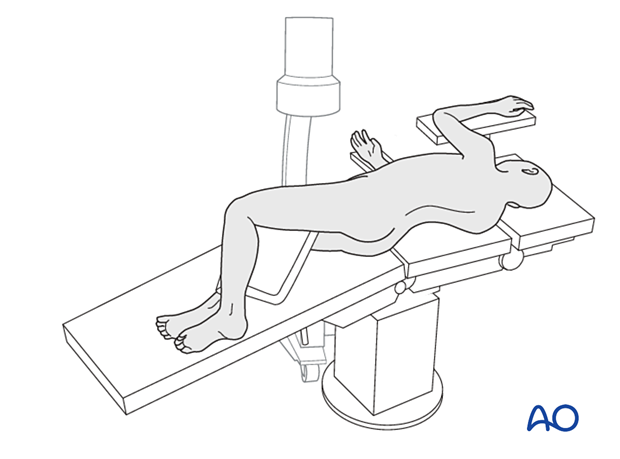Lateral decubitus position for Lateral lumbar interbody fusion (LLIF)
1. Patient positioning
The patient is placed onto a radiolucent table and turned into the lateral decubitus position.
The arm ipsilateral to the approach is elevated and placed on a well-padded support, and a cushioned pad is placed underneath the contralateral axilla.
The knees should be slightly flexed. The knee and hip flexion allows relaxation of the psoas muscle.
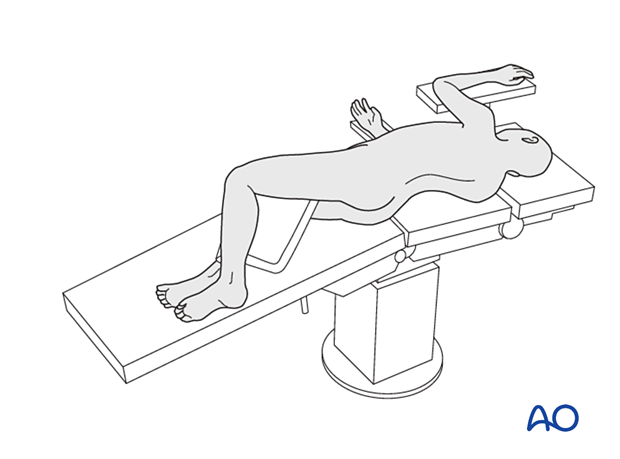
The patient is secured to the table by taping, and care is taken to avoid pressure on the skin in vulnerable areas (the thorax, breast, head of the fibula, and ankle).
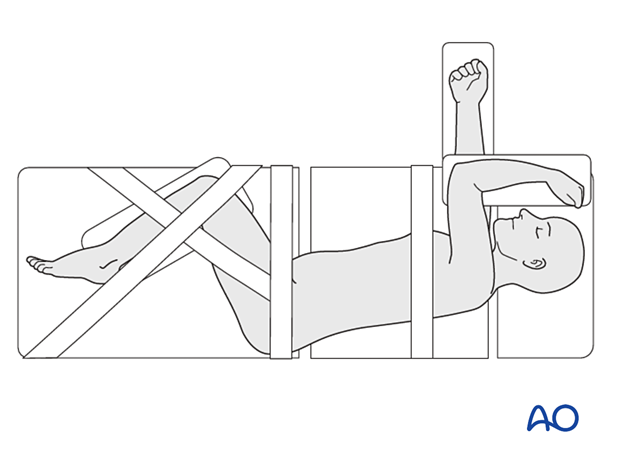
The iliac crest should be positioned just over the table break. The angle of the table break must not be more than 40° because of the risk of increased intraneural strain. This can injure the lumbar plexus.
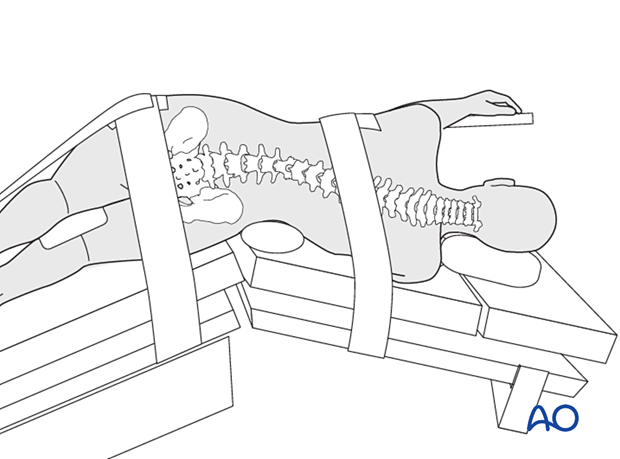
2. Anesthesia
General anesthesia with endotracheal intubation is required.

3. Draping
4. Preoperative antibiotics
Antibiotics should be administered prior to incision and at two-hour intervals during the procedure.
A cephalosporin antibiotic with good Gram-positive coverage is generally recommended.
Patients with penicillin allergies should receive vancomycin or clindamycin.
5. Neuromonitoring
Neuromonitoring is strongly recommended due to the close proximity to the lumbar plexus.
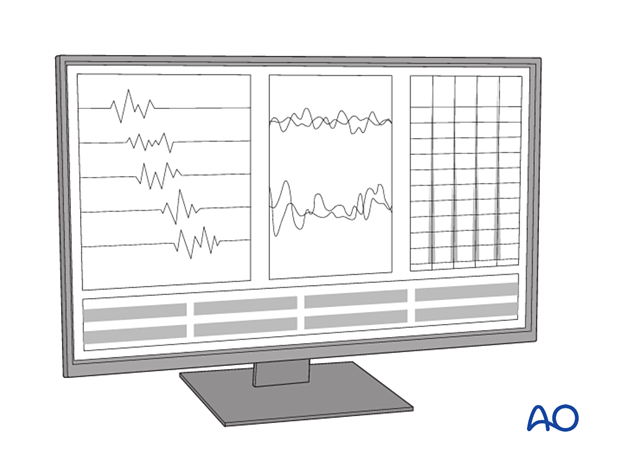
6. Fluoroscopy
The incision can be planned based on the true lateral fluoroscopic view.
